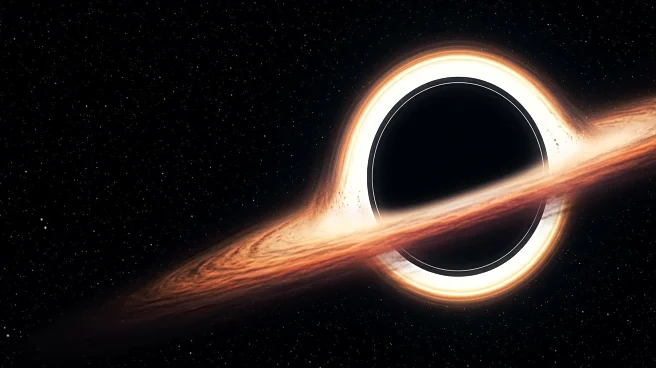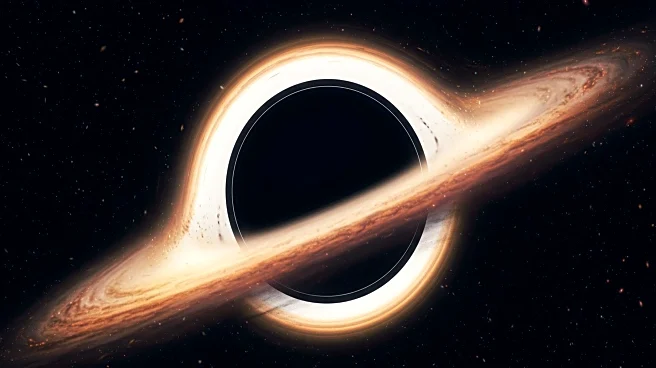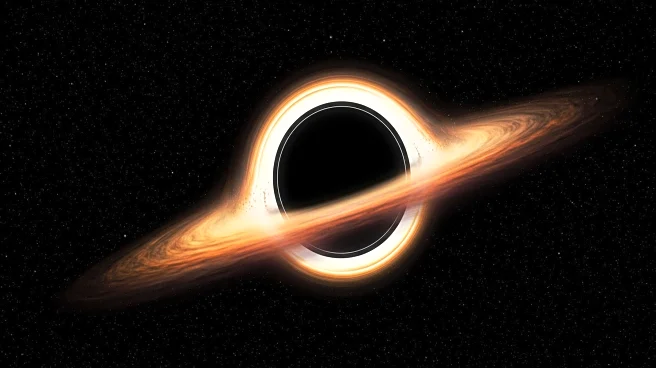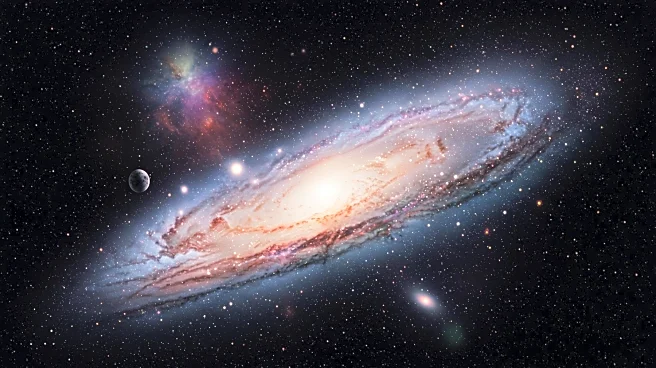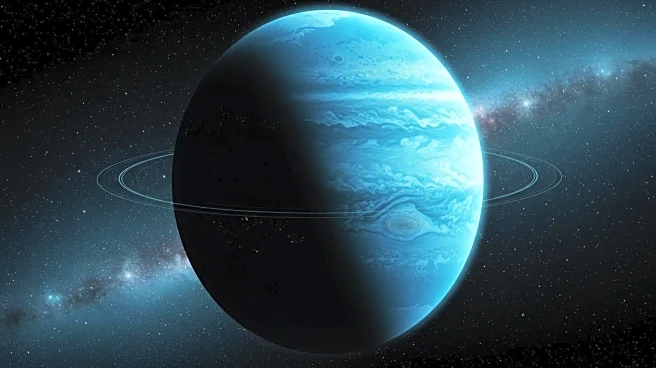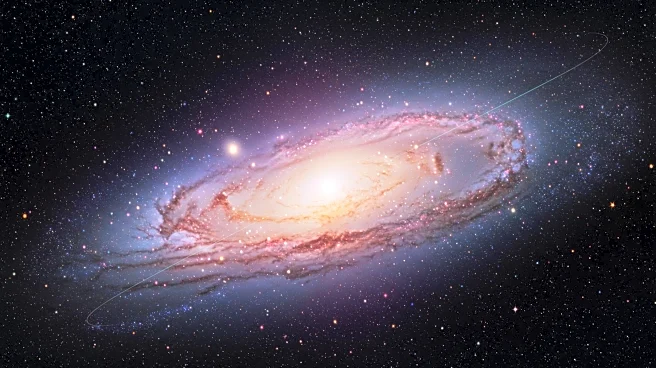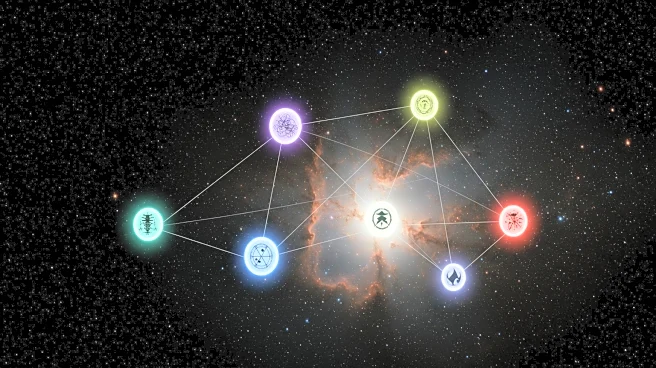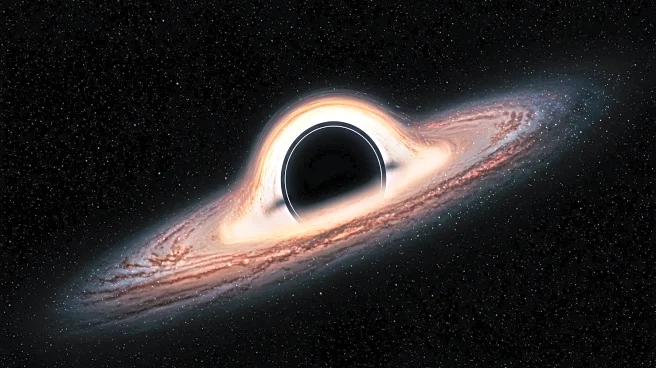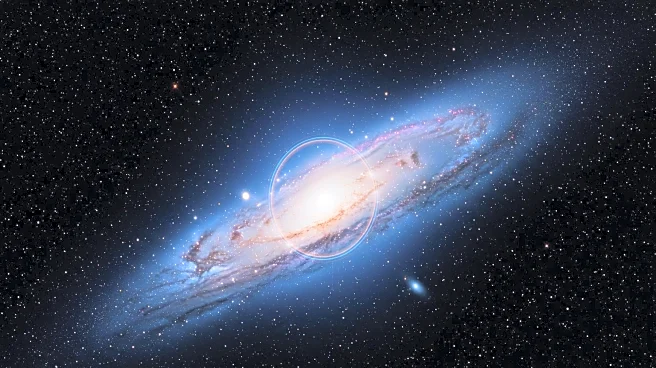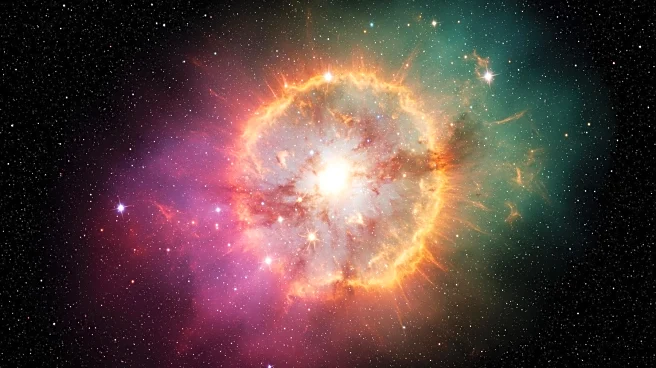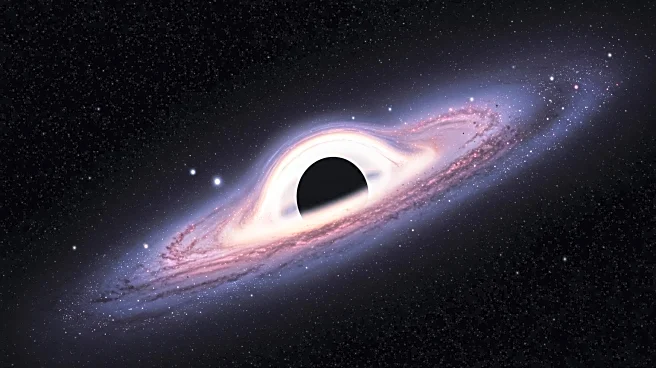What's Happening?
A new study suggests that black holes might convert dead star matter into dark energy, potentially explaining discrepancies in current cosmological models. This theory, known as the cosmologically coupled black hole (CCBH) hypothesis, posits that black holes could be tiny 'bubbles' of dark energy. The hypothesis challenges the standard model of cosmology, which assumes a constant strength of dark energy. The idea was inspired by data from the Dark Energy Spectroscopic Instrument (DESI), which indicates that the strength of dark energy is changing over time. Researchers, including Steve Ahlen from Boston University, are exploring this unorthodox idea, which was initially proposed by scientists Kevin Croker and Duncan Farrah.
Why It's Important?
The CCBH hypothesis could significantly alter our understanding of the universe's expansion and the role of dark energy. If black holes indeed convert matter into dark energy, it could explain the changing rate of the universe's expansion, known as the Hubble constant. This theory also addresses the mass of neutrinos, suggesting a positive mass in line with ground-based experiments, resolving previous inconsistencies. The implications of this hypothesis extend to the fundamental understanding of cosmic evolution and the universe's matter-energy budget, potentially impacting future research and theoretical physics.
What's Next?
Further data collection and analysis are required to validate the CCBH hypothesis. The scientific community will need to scrutinize this theory extensively before it can be considered a new paradigm in cosmology. Researchers will continue to use DESI data to test this and other unconventional hypotheses, aiming to resolve existing mysteries in cosmological models. The ongoing collaboration between DESI and other scientific teams will be crucial in exploring the viability of this theory.
Beyond the Headlines
The CCBH hypothesis challenges traditional linear intuition by linking large-scale cosmic phenomena with small-scale processes. It suggests a dynamic relationship between star formation and dark energy, proposing that the latter's influence correlates with the number of stars born and dying over cosmic history. This perspective could lead to a reevaluation of how we understand the universe's structure and evolution.
